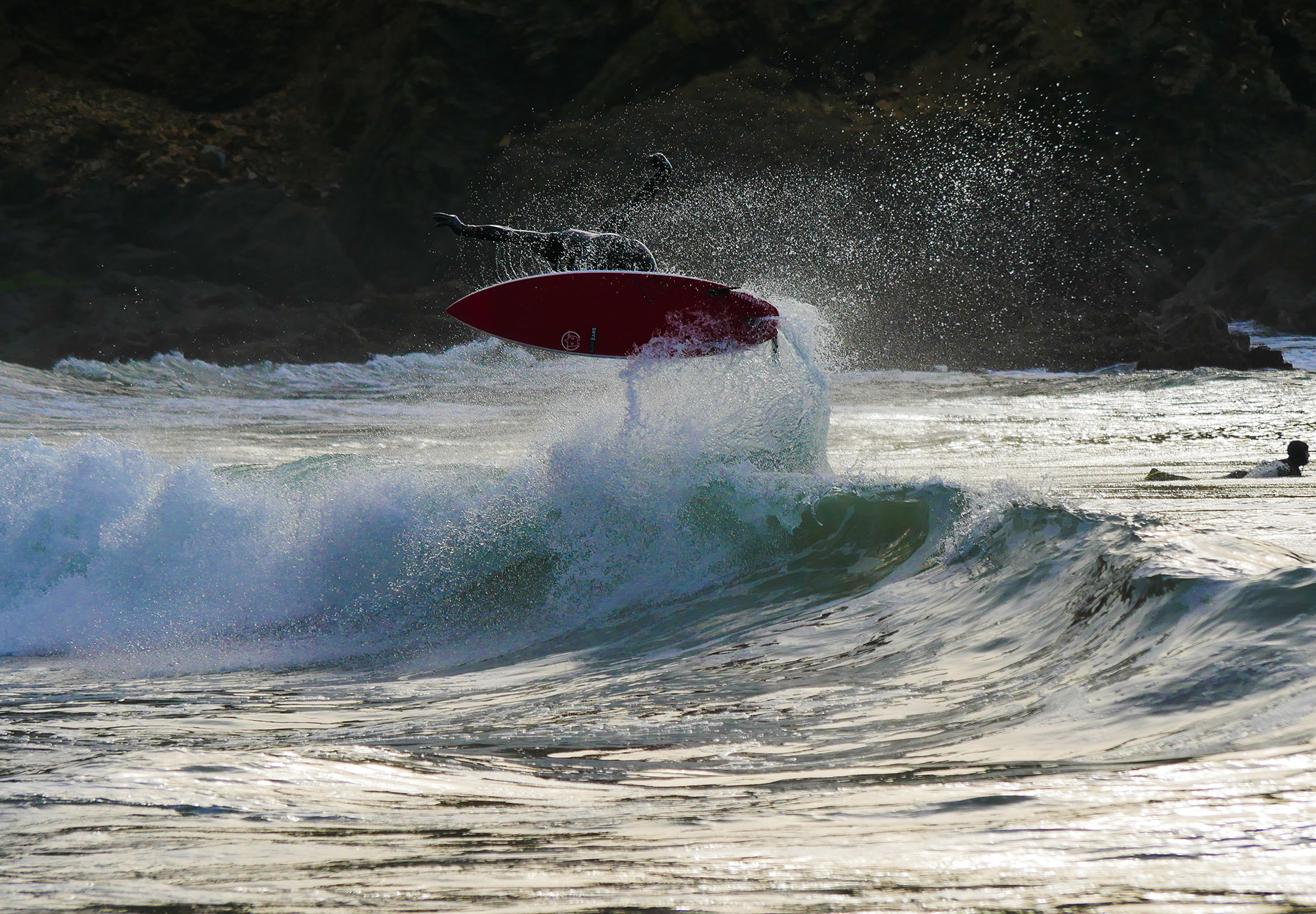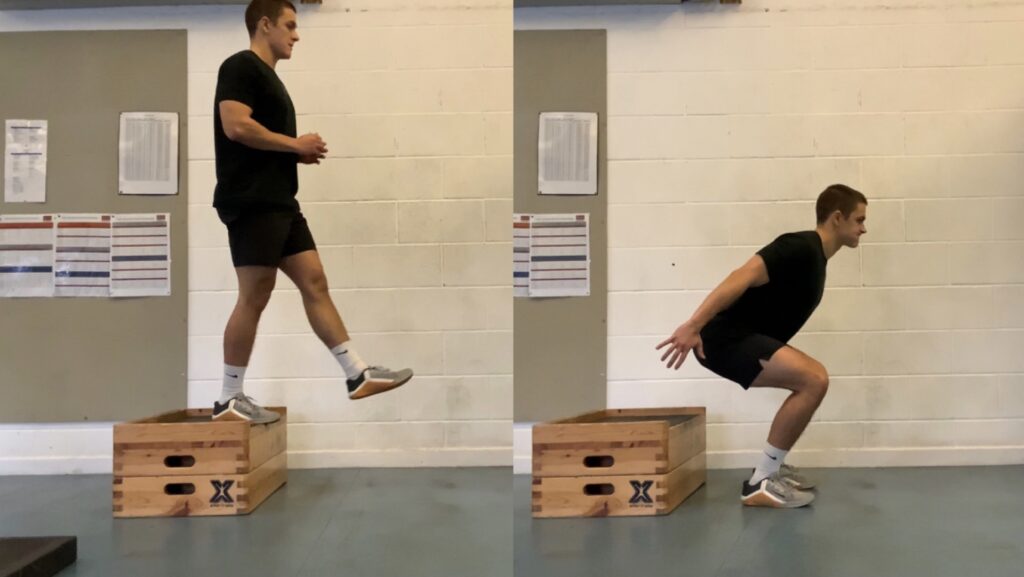How to Surf Better with Jump Training
Written on June 2nd 2021, By Ben Jenkins

Written on June 2nd 2021, By Ben Jenkins
Jump training is a critical pillar of performance in a lot of sports and surfing is no different. You might think that only the surfers performing aerial manoeuvres need to worry about this and even then… how often are aerials performed? Well… we actually see landing forces in a large majority of surfing manoeuvres (bottom turns, re-entries, floaters, aerials…) and even though the specific skill of an aerial may not occur as frequently as other manoeuvres, its performance may have a considerable impact upon the outcome (especially in competition). The research suggests to us that heats involving aerial manoeuvres tend to score higher than those that do not. So from a competitive perspective, jumping performance is something we should definitely hold in high regard.
Controlling landing forces is a crucial element of jump training. The ability to land without decay in efficiency will have a great impact on longevity. Every surfer wants to to be able to continue surfing as they get old and developing good movement patterns will play a big part in allowing this to happen.
I like to use the childhood game Buckaroo as a good analogy of what loading poor movement can do to us. For those that don’t know, in the game each player will take turns in loading random objects onto a mule. Once the loading gets too much, the mule bucks and you lose… Loading faulty movement is no different. One bad landing might not cause injury, but if you keep loading it, at some stage your body is going to buck and you’re going to lose (get injured).
So jumping performance is definitely an important aspect of surfing. Not only from a performance perspective, but also from an injury prevention standpoint. Any movement that we see in high volumes or that may have a significant impact on outcome needs to be considered as a performance criteria.
So we are sold on the idea that jump and landing training is beneficial for the surfer? Great, lets get into it.
One of the biggest mistakes I see when people perform jumping and plyometric exercises is that they go straight for the most advanced variation they can think of or have seen on social media, with far too much intensity and volume. As with most things in life, you need to earn your stripes in order to progress to the fancy stuff. You wouldn’t show up to your first surfing session at 10ft Pipeline and you wouldn’t try and squat 200kg on your first gym session. Jump training is no different and there is a continuum that I like to follow when progressing jumping exercises.
This starts with ensuring we have an appropriate amount of mobility that is required to perform jumping exercises. Limited ranges of motion or postural imbalances, specifically at the hips, knees, ankles and spine will cause a leak in power. Efficiency if very important. Using limited ankle range as an example: if you are limited in your ankles, you will produce a higher peak force on your landing, putting a higher strain on the ankle and knees. Not ideal! When we are performing any form of jumping exercise it is essential that we are able to flex the ankles, hips and knees to absorb the landing forces through the muscles to spare the joints.
This leads onto our next phase and that is effective jumping and landing technique. It would seem appropriate to ensure we know how to land effectively before starting with 720 degree jumps off boxes, wouldn’t it? Exercises such as altitude drops are a great way to reinforce good landing positions and build eccentric strength. Eccentric strength refers to the muscle lengthening upon landing, providing us with stability. Without this, we would crumble to the floor.

When it comes to assessing what is ‘good technique’ on landing, simply observing what the landing looks like will tell us a great deal. If the landing makes you wince when you watch it, it probably isn’t stable. As a general rule we want landings to be quiet and fast with an appropriate amount of flexion based on the height of the drop. There is no such thing as perfect technique, but there are some things I would try to avoid:
If you are able to consistently eliminate all of the above you are on the right track.
Now we have a better understanding on how to land effectively, we can start introducing some more intensity and loading into our jumping movements and I would start off any jumping session as you would a weights session. Gradually building up the bodies tolerance to volume through some lower intensity movements to prepare the connective tissues and further refine technique. These jumps are referred to as ‘extensive jumps’ and would involve a couple of exercises where the focus is not on jumping distance and height, but fluidity of movement. “Make it look easy” is something I like to use as a cue for these exercises.
Following on from this we are then able to introduce some more intense jumping movements. Although I wont go into exercise recommendations, as these will be specific to the individual, I will highlight a number of ways in which we can improve jumping performance.
In order to be powerful, we must first be strong. Whether we are talking about landing or producing force to perform advanced jumps, we need a good foundation of strength. Training maximal strength develops an individuals ability to apply high forces and, as such, improves his or her capacity for a high rate of force development. This means that for the untrained individual, gains in maximal strength will translate into increased jump performance. This is an easy win in the first instance for any surfer.
When we refer to jumping and plyometric training there are typically two types of jumps that we use and I would recommend building both of these into your programme. The first is jumps that involve limited contact time with the floor (<250ms) and significant stimulation of the stretch shortening cycle (SSC). These are deemed as plyometric and would include exercises such as skips, pogos and depth jumps. The stretch shortening cycle (SSC) is where muscle rapidly switches from an eccentric to concentric muscle action which allows the individual to produce more force and move quickly.
The second is jumps that utilise longer ground contact times with significantly less stress on the SSC and can deemed as jumps. These would include exercises such as paused box jumps and loaded jump variations. Both jumping categories should be combined within a programme to yield the best results.
Finally, we must ensure to incorporate horizontal, vertical, lateral, rotational and single leg jumping into the programme when it is appropriate to do so. As mentioned before, you earn your stripes. If you are unable to land effectively off a single leg altitude drop from 20cm, you are not ready for advanced plyometric exercises that involve rotation and landing with eyes shut (for example).
With all of this information, I am sure you are going to start incorporating jump training into your week but don’t fall into the trap of mimicking surfing movements. Mimicking surfing movement is a simplistic approach to being ‘surf specific’ and can often interfere with the skill that is being performed. It doesn’t need to look like the sporting movement in order for it to be beneficial.
When it comes to sets and reps, less is more. Avoid lots of high intensity jumping exercises with large sets and reps. Instead, pick 1-2 exercises per session for 1-2 sets of 1-5 reps to start off with. Fatigue and high intensity work don’t go well together and we want each jump to be performed with high intensity and clear intent.
So to quickly recap what we have covered:
If you have found this post useful, please share it so that others may also benefit from it. If you would like any further help with incorporating jumping and plyometric based work into your programme, please get in touch via the contact form on the website.
Shoot me a message using the form below and I’ll get back to you ASAP.